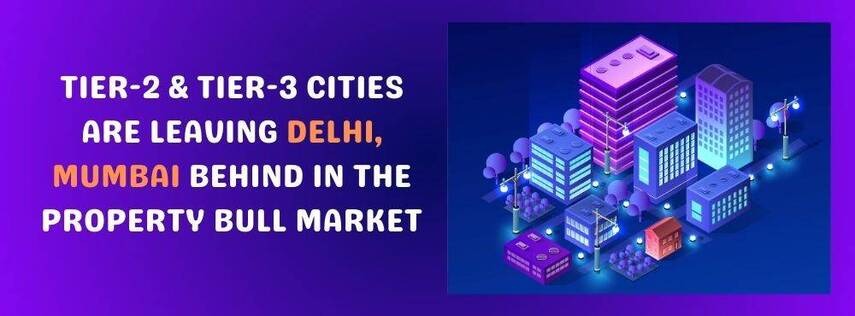Tier-2 cities such as Lucknow, Ludhiana, Chandigarh, Indore, Dehradun, Ajmer, and Jaipur are emerging as real estate hotspots, leaving behind traditional property giants like Delhi and Mumbai. According to recent reports, India’s tier-2 and tier-3 cities have witnessed rapid development over the past decade, and since the Covid-19 pandemic, the growth in these smaller cities has outpaced that of some metro towns.
One of the main reasons for this shift is the relatively lower operating costs in tier-2 and tier-3 cities. These regions offer an abundance of skilled talent while remaining more affordable for businesses and residents alike. IT parks, industrial zones, and special economic areas are rapidly being established, reflecting the increasing contribution of these cities to India's overall economic landscape. In addition, government initiatives such as the Smart City Mission and the Atal Mission for Rejuvenation and Urban Transformation (AMRUT) have significantly improved the infrastructure, making these smaller cities more attractive for both businesses and homebuyers.
Mohit Goel, Managing Director of Omaxe Limited, highlights the transformation:
"Tier-2 and tier-3 cities are evolving into urban centers, which is driving significant changes in the real estate sector. Property prices in cities like Chandigarh, Lucknow, Indore, and many others have skyrocketed in recent years. The demand for residential and commercial spaces in these cities has increased manifold." ~ Mohit Goel, Managing Director of Omaxe Limited
Similarly, Sanjeev Agarwal, Chairman and Managing Director of Sage Realty, explains that the high cost of living in metro cities is pushing people to consider smaller cities as viable alternatives.
"As big cities become increasingly expensive, tier-2 and tier-3 cities are emerging as better options for homebuyers. Many of these cities now offer essential urban amenities like metro services, malls, schools, colleges, and hospitals, making them more livable and attractive for both investors and end-users." ~ Sanjeev Agarwal, Chairman and Managing Director of Sage Realty
In addition to affordability, quality of life is also playing a key role in this shift. Smaller cities are less congested, offer a better work-life balance, and are closer to nature. This, coupled with the increasing availability of modern amenities, has made tier-2 and tier-3 cities attractive destinations for both real estate investors and families looking to move away from the fast-paced and costly metro lifestyle.
As India’s real estate market continues to grow, the rise of tier-2 and tier-3 cities is likely to reshape the landscape, offering more opportunities for developers, investors, and homebuyers alike.







